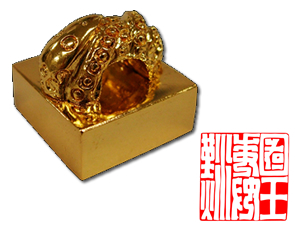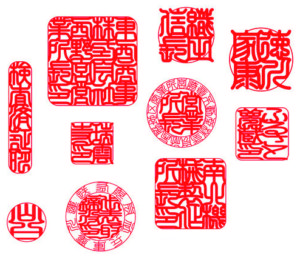

The Japanese “Hanko” personal seal
In Japan, on documents from simple delivery slips to official forms such as marriage registrations, Bank applications etc. seals, called “Hanko” or “Inkan” are used to serve the same role as a signature in the West.
History
It’s said that the practice of using seals in Japan began 1300 years ago when government officials used them on official documents.
Seals with glamorous and intricate designs found among cultural artifacts from the warring states period (15th ? 17th century) reveal the power and dignity of the warlords of that era.
Along with modern developments, legislation was passed requiring the use of seals in court papers and other important documents made the system spread around the country rapidly.
On numerous important occasions in the Japanese history, Seals were used as the proof of identity. The Japanese society has inherited and absorbed the practice and continued till today.
Japanese way of living & the seal
A personal seal is a must have item in the Japanese society. Whether to buy something big, or to make a contract or to enter a child in to a school or to apply for a job, a hanko or inkan seal is indispensable.
Seals falls in to different categories. They include a simple day to day use Hanko, ‘Jitsuin’ or officially registered seal used in real estate contracts etc., bank seal used for financial transactions, Company Seals, and in the field of arts, the “Seal of Acclamation” etc. In Japan, the Japanese seal culture is one of its own.


